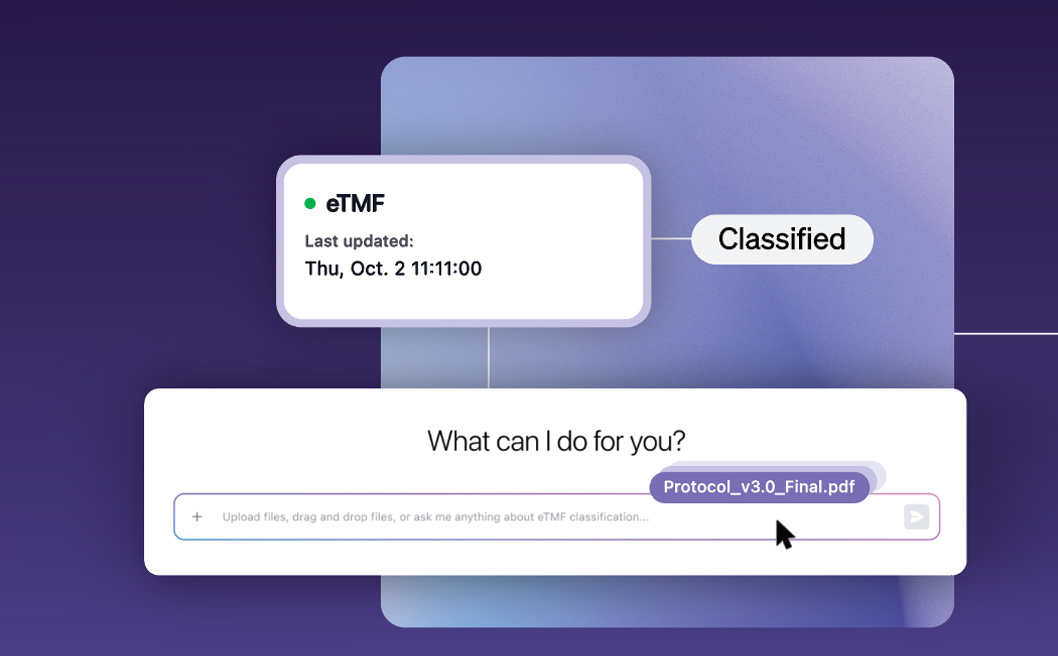Introduction
This summary looks at DCT patient and caregiver preferences regarding eConsent, telehealth, wearables, and other digital technologies in the area of oncology. There are differences noted between age, gender, and specific types of cancers.
Oncology Patient/Caregiver Preference for Telehealth
During the pandemic, there was a surge in telehealth visits in medical oncology. Some of the telehealth benefits include convenience, the immediacy of results, news processing, family comfort, and privacy during the receipt of bad news. Although patient preference is individual in nature, there are some common themes. Telehealth has also increased access to medical care and clinical trials (Granberg, et al 2021).
A randomized study for patients undergoing radical prostatectomy showed that those who do accept telehealth visits report a positive view of telehealth. Another study shows that 92% of patients who had telehealth visits were satisfied with the visit. A survey reported that 32% of thyroid cancer patients reported video-based healthcare. Another advantage of telehealth noted by patients is the convenience, especially for short visits with a long commute. The COVID-19 pandemic has had a large positive influence on video visits. These studies noted that only included patients who spoke English and accepted video visits (Granberg, et al 2021).
There is a significant racial disparity in the use of telehealth for cancer care among with Black, Hispanic, and Asian patients. The higher incidences of cancer among these populations makes it more critical to understand telehealth preference among diverse groups. Also, more research on telehealth visits must be conducted for patients in rural areas who have limited experience with telehealth and medical oncology care. Video visits utilization must be tailored to the various groups.
Some concern of health participants in video visits is to have a nurse present during the telehealth visits to answer questions before and after the doctor’s visit. Rural patients seem to be grateful for the value telehealth adds to their care. Telehealth can enhance enrollment in clinical trials (Doolittle and Spaulding, 2006)
In a study of telehealth visits using the Houston Methodist MyChart platform, it was noted that oncology patients who declined video visits were older, 67 vs 60, lived in lower-income areas, and were less likely to have commercial insurance (Darcourt, et al, 2020). The majority of the patients who participated (92.6) were satisfied and 74% stated they would use it again. There are opportunities to improve the equal implementation of telehealth in older, lower-income, and underinsured populations (Darcourt, et al, 2020).
"It was a working day for me and it’s an around 80-mile round trip to see my neurology team so having this done as a telehealth appointment saved me time, energy and was a much more efficient way of conducting the appointment. The clinician called me on time and we spent the time we needed to spend, nothing more/nothing less. I could then go straight back to working." - Trishna Bharadia, Medable PCN member
Oncology Patient/Caregiver Preference eConsent
The overall concerns for patient eConsent were data protection, reservations about sharing information with pharmaceutical companies, and obtaining the specifics on studies that use their EHR data. One pro for electronic health records is that they contain information that may be more representative of diverse communities which can improve demographic representation in clinical research. This information could further health equity goals. Patients must be appropriately informed to ensure the long-term success of eConsent (Harle, et al, 2018).
Studies have shown that more than 80% of patients view prior consent as necessary for their personal health information to be used in medical research. Patients differ in who has access to their records and tend to trust hospitals more than pharmaceutical companies. It also depends on the complexity of what is released in their medical records, such as broad, disease-specific, or study-specific information.
While there are divergent preferences in electronic consent, the streamlined organization and clarity of eConsent an advantage that patients prefer. Also, patients prefer a reduction in paperwork. Other patients reference their familiarity with tablet computers in other settings. The preference for a consent form on paper rises among older adults. In addition, only one-third of Americans over 65 own a touchscreen smartphone or tablet computer, therefore a paper alternative may be needed to accommodate these individuals (Harle et al, 2018).
"The process of eConsent to join a clinical trial is very well thought out. Receiving emails with step by step instructions is great. Creating an account is very easy, with easy to sign documents." -Barbara Franzetti, Medable PCN member
Oncology Patient Preferences for Wearables and Other Technology
Digital tools are effective in improving data collection and accuracy and reducing patient burden. The majority of oncology patients use smartphones, but only a minority of them 18% use wearable technology such as a smartwatch. However, 90% would use the technology if provided to them as part of a clinical study. 74% of these patients would prefer to use their own smartphones to report data or for video calls. Of the patients who visit their doctor in person, 48% would prefer to have a video call, especially if in pain. The things that patients find most appealing about wearables are access to information that helps them manage their illness, in-app reminders, and knowing that medical personnel are reviewing their data and will contact the patient to discuss things such as symptoms (Dias and Faulkner 2020).
Wearables and other technology allow for better disease control, especially in chronic conditions and clinical trials. In oncology, the use of wearables has not been studied as intensively as in other specialties and patient preference is still evolving, however, the indications are promising in their application. Genitourinary cancers such as testicular cancer, kidney cancer, urothelial carcinoma, and prostate cancer account for 25% of new cancers and represent a relevant size group to obtain information regarding wearables and technology. In addition, the ages of these cancers typically range from 33 to 73 years. Most of the patients in this area are male. Many of these diseases have turned into chronic conditions, thus making the importance of patient monitoring, more important. Digital technology appeals to a younger age group, however, interest in the data from wearables is still high among older groups (Roder et al, 2021)
Literature shows positive feedback on wearables, especially from breast cancer survivors. These survivors use accepted activity trackers to increase and monitor physical activity. The ability to personalized and customized treatment interventions is a benefit. In another study, prostate patients found fitness trackers comfortable and easy to use.
Elective physical activity intervention is essential in oncology care, yet only some survivors meet the weekly physical activity guidelines of 150 minutes weekly of moderate physical activity. Further geographic inequalities exist. Distance-based physical interventions are needed to reduce these inequalities. These interventions mitigate access and transport issues. Wearables tend to be less expensive than supervised in-person physical activity interventions.
In a study of breast, gynecologic, colorectal, and endometrial patients, most patients reported that wearables such as Fitbit and Garmin made them more aware of their physical activity. Patients appreciated the prompts and feedback on the devices. Real-time feedback was important in motivating the patients to change their behavior and meet their goals. There was some concern by the patients about the accuracy of the devices, as arm swings doing housework using the FitBit sometimes ended up as steps. Patients prefer wearables that are aesthetically pleasing and highly functional. Patients preferred physical activity wearables that counted steps, kept time, and that synced easily (Hardcastle et al, 2018). Most of the patients found wearable activity trackers very acceptable.
"Having the site person on a video call is extremely helpful when reviewing the Information on the eConsent form. There is a lot to understand in there and being able to ask questions as they arise makes it more comfortable for the patient." - Barabara Franzetti, Medable PCN Member
Conclusion
Overall, there is a very favorable patient preference in the usage of telehealth, eConsent, and wearable technology in oncology trials. This preference will continue to increase as technology improves. More studies in different specialties are needed.
Bibliography
Dias, N., Yamamoto, R., & Faulkner, K. G. (2020). Preferences and motivational factors for the use of digital technology in real world oncology studies.
Darcourt JG, Aparicio K, Dorsey PM, et al: Analysis of the implementation of telehealth visits for care of patients with cancer in Houston during the COVID-19 pandemic. JCO Oncol Pract 17:e36-e43, 2020
Doolittle GC, Spaulding AO: Providing access to oncology care for rural patients via telemedicine. JCO Oncol Pract 2:228-230, 2006
Granberg RE, Heyer A, Rising KL, Handley NR, Gentsch AT, Binder AF. Medical Oncology Patient Perceptions of Telehealth Video Visits. JCO Oncol Pract. 2021 Sep;17(9):e1333-e1343. doi: 10.1200/OP.21.00086. Epub 2021 Jul 21. PMID: 34288697
Hardcastle, S. J., Galliott, M., Lynch, B. M., Nguyen, N. H., Cohen, P. A., Mohan, G. R., ... & Saunders, C. (2018). Acceptability and utility of, and preference for wearable activity trackers amongst non-metropolitan cancer survivors. PloS one, 13(12), e0210039.
Harle, C. A., Golembiewski, E. H., Rahmanian, K. P., Krieger, J. L., Hagmajer, D., Mainous 3rd, A. G., & Moseley, R. E. (2018). Patient preferences toward an interactive e-consent application for research using electronic health records. Journal of the American Medical Informatics Association, 25(3), 360-368.
Muhsen, I. N., Rasheed, O. W., Habib, E. A., Alsaad, R. K., Maghrabi, M. K., Rahman, M. A., ... & Hashmi, S. K. (2021). Current status and future perspectives on the Internet of Things in oncology. Hematology/Oncology and Stem Cell Therapy.
Pavic, M., Klaas, V., Theile, G., Kraft, J., Tröster, G., & Guckenberger, M. (2020). Feasibility and usability aspects of continuous remote monitoring of health status in palliative cancer patients using wearables. Oncology, 98(6), 386-395.
Rodler, S., Buchner, A., Stief, C. G., Heinemann, V., Staehler, M., & Casuscelli, J. (2021). Patients’ perspective on digital technologies in advanced genitourinary cancers. Clinical Genitourinary Cancer, 19(1), 76-82.










